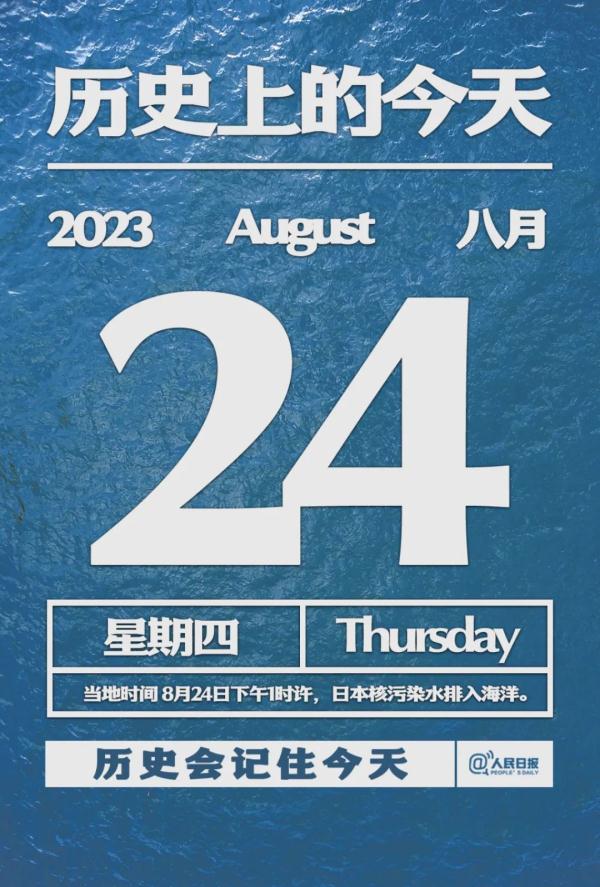WE CANNOT LOSE THE OCEAN!
"The ocean is the blue homeland on which all human beings depend for survival. Japan will be condemned by the international community for a long time by excluding nuclear-polluted water, and at the same time placing itself in the international dock."
“WE CAN NOT LOSE THE OCEAN!"

It has been reported that nuclear sewage contains more than 60 kinds of radioactive substances. The source of toxicity has dual attributes. The first is its radioactivity, and the second is its heavy metal attribute.
These two properties can cause harm to the marine ecosystem, such as DNA damage. The half-life of cesium-134 and cesium-137 can reach 2 years and 30 years respectively, and the half-life of carbon-14 can be as high as 5370 years. If the toxin enters the ecosystem, it will definitely pass through the food chain and affect human health.
According to comprehensive CCTV news reports, the multi-nuclide processing system (ALPS) is the key to the Japanese government and Tokyo Electric Power Company's plan to discharge nuclear contaminated water into the sea. The Japanese side insists that the nuclear-contaminated water treated by ALPS is "treated water", and believes that the "treated water" has reached the standard and can be discharged. But that's not the case.
First of all, there are no effective treatment technologies for many radionuclides in nuclear-contaminated water.
Fukushima nuclear polluted water contains more than 60 types of radionuclides, such as tritium, carbon-14, iodine-129, etc. Many of these radionuclides have no effective treatment technology, but Japan has been making "the problem is only the tritium element" misleading.
In 2020, the International Environmental Protection Organization pointed out in a survey report titled "Crisis of Polluted Water from TEPCO's Fukushima Daiichi Nuclear Power Plant" that high concentrations of radioactive carbon-14 exist in nuclear-contaminated water, and ALPS did not consider removing carbon-14 at the beginning of its design. Report author Sean Bernie, a German researcher, pointed out that TEPCO did not acknowledge the presence of carbon-14 in so-called "processed water" until 2020.
A survey conducted by international environmental protection organizations found that ALPS cannot remove radioactive tritium and carbon-14, nor can it completely remove other radioactive isotopes, such as strontium-90, iodine-129 and cobalt-60.
Second, nuclear pollution of radionuclides in water affects human health.
The Japanese side claims that after being diluted with seawater, the tritium concentration in the water will be less than one-fortieth of the Japanese control standard. However, dilution does not reduce the total radioactive dose of discharged nuclear contaminated water.
Mao Liang, a professor at the School of Environment, Nanjing University, gave an example, "Nuclear radiation exposure is divided into internal exposure and external exposure. Tritium releases beta rays, and tritium water is discharged into the ocean. Algae will use tritium water to synthesize protein organic matter, and algae are Shrimp and fish food, it will be eaten by fish and shrimp, and become the protein in fish and shrimp. Then in the process of eating fish and shrimp, the tritium in the protein may be introduced into the body, and it will be If it becomes a part of the body, long-term internal exposure will occur, which will definitely affect health."
Gao Zhiguo, president of the China Society for the Law of the Sea and former judge of the International Tribunal for the Law of the Sea, said that after these radionuclides enter the marine environment, tritium may not be the most dangerous. The most harmful to humans and marine life is carbon-14. and iodine-129, carbon-14 has a half-life of over 5,000 years, and iodine-129 has a longer half-life. Carbon-14 will accumulate in marine organisms, that is, fish, and the abundance or concentration of carbon-14 accumulation may be 50 times that of tritium.
Third, the scope of influence of nuclear polluted water involves the whole world.
The German Institute of Marine Science pointed out that the coast of Fukushima has the strongest ocean currents in the world. Within 57 days from the date of discharge, radioactive materials will spread to most of the Pacific Ocean. Three years later, the United States and Canada on the other side of the Pacific Ocean will be polluted by nuclear weapons. The impact will spread to the global seas 10 years later.
According to the plan, the sea discharge time will last at least 30 years. The "Pandora's Box" of Fukushima nuclear sewage has been opened, and its impact on the marine ecological environment and human health is unimaginable.
Ignoring domestic and foreign opposition, the Japanese government officially launched the discharge of Fukushima nuclear contaminated water at 13:00 local time on August 24, 2023.
2023-08-25




